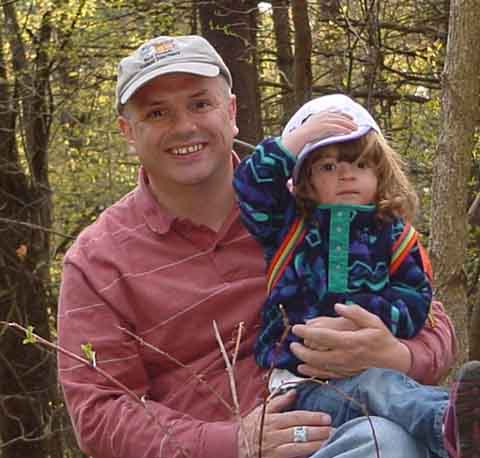OK, maybe hate is too strong a word - how about "My experience with recent high school textbooks agrees with Daniels and Zemelman's thinking that Textbooks are Not Enough"?
The example I'm most familiar with from the modern textbook world could have been the example cited in D&Z, which came from an American Association for the Advancement of Science study (Budiansky 2001). The study uses the adjective "hyperkinetic" to describe recent textbook, an apt description that brings to mind excessive or abnormal motion, spasms, and webpage hyperlinking, as in jumping from topic to topic.
The photo is an example from Prentice Hall's New York Math A text, which is one of the texts in use in my student teaching classroom. It has many of the hallmarks of a hyperkinetic text, including lots of color, photos (taking up lots of space while providing no content), a barely related sidebar, in this case a "Technology Hint" meant more as teacher guidance, and a "Try This!" section.
My reaction when I first opened this book was to be confused and overwhelmed, exactly as described by Daniels and Zemelman. The customers for this book (the students, not the textbook adoption committee) must feel at least as overwhelmed, videogame junkies or not. It took quite a while to be able to pull any sensible content out of this monster, and in another point of agreement with D&Z, it jumped from topic to topic almost randomly.
Did the textbook designers and salespeople have actual use in mind, or just sales? Another great observation from D&Z - You never want to see sausages, laws, or textbooks being made! Because the students aren't the customers - the textbook adoption committees in Texas and California are the people that must be served (along with the NYS committees for the our "personalized" version).
But wait! I have good news, in this case at least. The class I am teaching uses this book very sparingly. There is a class set that remains on the bookshelf, and the lessons are taught using the NYS standards aas guidance. Just about the only aspect of this resource that is used are the practice problem sheets from the associated workbooks.
I am in a school that seems to be adhering to the advice provided by D&Z - use textbooks sparingly (as reference books), and provide lots of authentic non-fiction readings - students should be reading the same books adults read. Who knew?



